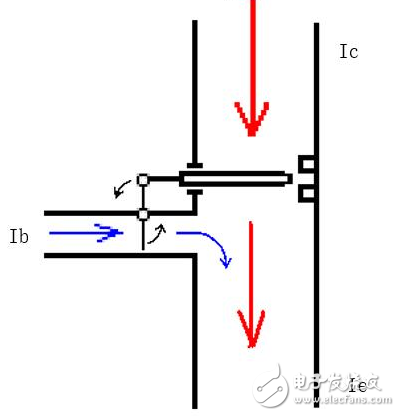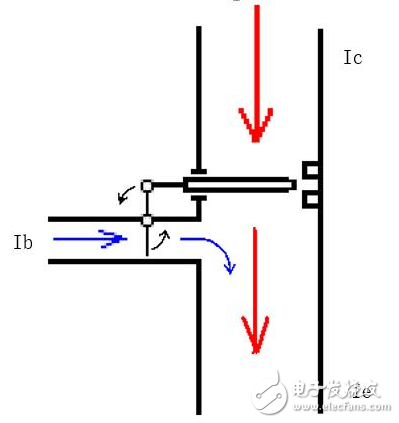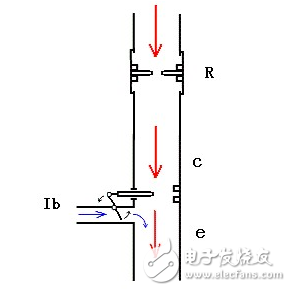Everyone knows that a transistor is a current-controlled device. When it operates in the amplification mode, the collector current Ic is equal to β times the base current Ib. But how can we really understand the amplification mechanism of a transistor? Instead of getting into the movement of electrons and holes inside the transistor, or just repeating textbook principles, this article will provide an intuitive explanation to help beginners visualize how a transistor works.
A transistor functions like a controllable valve: it uses a small base current (Ib) to control a much larger current flowing between the collector and emitter (Ic). This is the basic idea behind its amplification function.

Figure 1
In the image, a small blue water flow controls a lever in a thin tube, allowing a larger red water flow through a bigger pipe. The more blue water flows, the more red water passes through. If the amplification factor is 100, then a base current of 1 mA would allow 100 mA of current to flow through the collector. This analogy helps us understand how a transistor amplifies current.
Now, let’s look at a typical circuit used with microcontrollers.

Figure 2
Let’s analyze this circuit. Assuming a gain of 100, and ignoring the base voltage for now, if the base resistor is 10kΩ and the input voltage is 10V, the base current would be 10V / 10kΩ = 1mA. Then, the collector current should be 100 × 1mA = 100mA. Using Ohm's Law, the voltage across Rc (50Ω) would be 0.1A × 50Ω = 5V. That leaves 5V across the collector and emitter, which is fine.
But what happens if we reduce Rb to 1kΩ? Then the base current becomes 10V / 1kΩ = 10mA. According to the same gain of 100, the collector current would be 100 × 10mA = 1A. However, if the collector resistor is still 50Ω, the voltage drop would be 1A × 50Ω = 50V. That’s way above the power supply voltage, which doesn’t make sense. So, clearly, something is wrong here.

Figure 3
This shows that the transistor cannot always operate in the active region. When the base current is too high, the transistor enters saturation, where the collector-emitter voltage drops significantly, and the current no longer follows the β relationship. This is why it's important to choose the right biasing and resistors to keep the transistor operating within its linear range for proper amplification.
Online Double Conversion,Industrial Power Supply,Low Frequency UPS,Transformer Based UPS
Shenzhen Unitronic Power System Co., Ltd , https://www.unitronicpower.com
